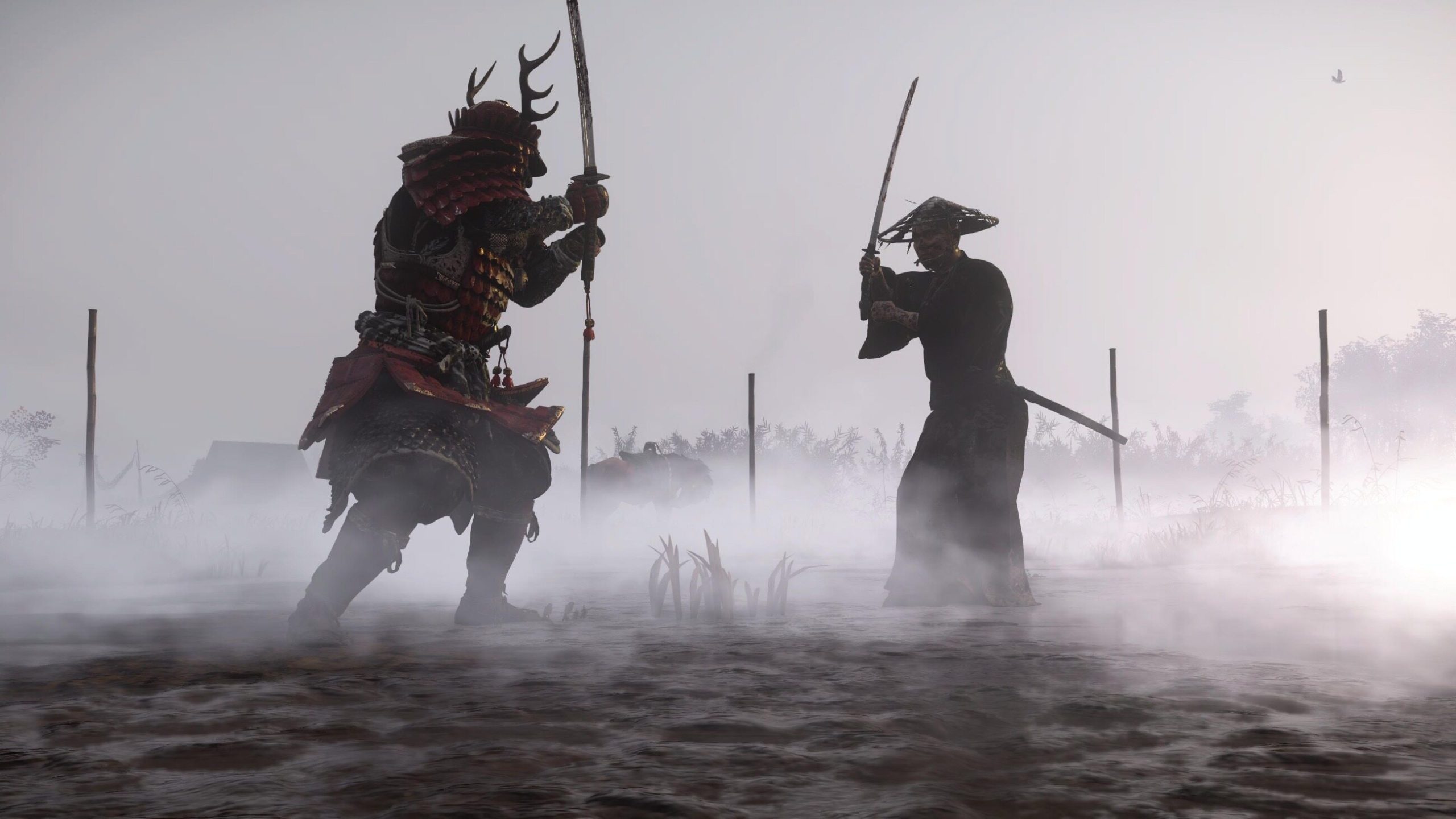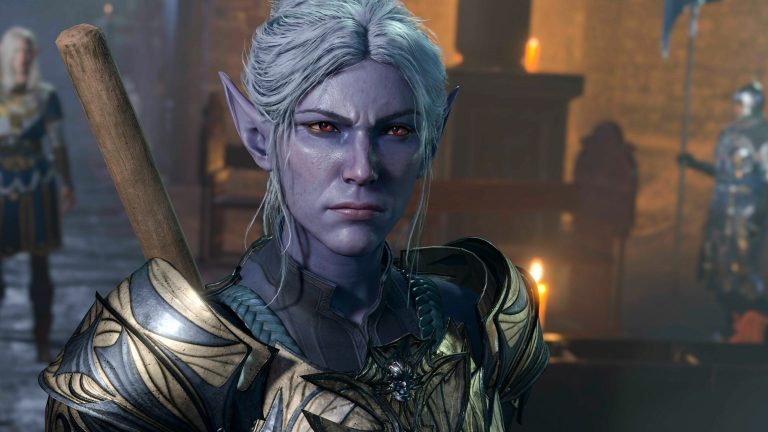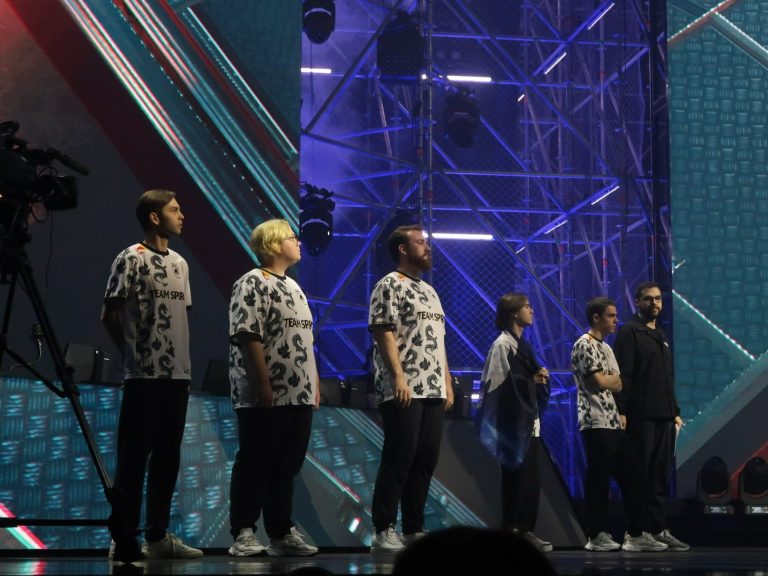“Ghost of Tsushima”. The worst open-world sins in their most beautiful form. (Game 30+)

“Ghost of Tsushima” on PS5 is one of the most beautiful games I have ever seen. The creators achieved a visual ideal that can be admired for hours. Combined with an extremely satisfying combat system, we should have a perfect game. Why isn’t this the case? Because “Ghost of Tsushima” repeats almost all the sins of modern open-world games.
The first 5-6 hours in the world of “Ghost of Tsushima” are truly magical. The riot of colors in autumn Japan combined with the beautiful play of light, fog, sun, fireflies, falling cherry blossom leaves and tall grass can make your head spin. Especially if they are viewed on a large enough screen. And even if I’m exaggerating when I say it’s the most beautiful game I’ve ever seen, I’m only exaggerating a little.
The second delight in the game comes when learning how to fight. It was designed in an incredibly effective and impressive way. After all, Japanese samurai were some of the greatest sword masters in history, or at least that is their reputation. The fight in “Ghost of Tsushima” is ideally placed between the simple one-two-three dodge known from, for example, “The Witcher 3”, and “Kingdom Come: Deliverance”, which is quite close to a medieval combat simulator. Landing a deadly shot after a perfectly parried enemy attack is as satisfying as scoring a headbutt from 300 meters in Battlefield (the old one, not 2042). And although the game gives you the opportunity to defeat opponents from a distance or secretly, there is nothing stopping you from being faithful to the bushido code and facing every fight in the open field, even if the number of opponents is significantly greater.
If we took these two elements and put them together in the style of the new “God of War”, we would get a game close to perfect. Unfortunately, the creators chose the open-world route. On the one hand, it gives the player the opportunity to admire the beautiful game world, but on the other it becomes tiring after the first 5-6 hours, because the developers repeated almost all the typical mistakes of this type of games.
All the sins of open-world games
The first sin: repetition. Youtuber Dunkey once said that if an Assassin’s Creed game says it has 90 missions, it actually has three missions repeated 30 times. In this respect, “Ghost of Tsushima” is even worse, because it has maybe three missions. These are: killing a group of enemies, tracking a fox that will lead the player to an altar and the challenge of shooting down targets with a bow in time. It’s easy to guess that the last two tasks are not very exciting, so the first one remains. And although fighting enemies, as I mentioned, is satisfying, if it is the only thing to do, it becomes a bit boring after a while. Similarly, traveling between places where enemies are waiting to be killed becomes tiring, even if we are traveling through the most beautiful world in a computer game. It’s the same when you eat chocolate. Even after the best one, it starts to feel nauseous if it was too much.
Sin two: lack of panache. The plot in “Ghost of Tsushima” is conducted in a terribly boring way. A good story, regardless of whether we are talking about a game, a movie or a novel, consists of two main elements: the story itself and how it is told. This second element is even more important, because it is the way the story is told that evokes emotions in us. For example, Patryk Vega’s latest films are rubbish compared to the books they were based on. Even compared to Vega’s old films, his new films are rubbish because he tells them in a much different way.
The story in “Ghost of Tsushima” is told through a series of cutscenes in which two people engage in dialogue. These dialogues are not written in any unique way and are delivered by talking heads. No action, no acting. This way of presenting the plot simply cannot succeed and engage the user. Adding to this the fact that the content of the dialogues did not influence the game in any way (the player has no influence on the plot), I simply did not listen to most of them.
Unfortunately, this is a common sin of games in recent years. It seems that the creators feel pressured to write thousands of lines of dialogue that actually result in nothing. They do not add anything to the plot and are made using the soap opera method: static camera, motionless characters and recited dialogues. There are few exceptions, but games such as “GTA V” or “Red Dead Redemption 2” were able to do it brilliantly. Well, not everyone can come close to the creator of these titles, i.e. Rockstar studio, in this respect. I don’t understand why this particular way of storytelling has become the industry standard, because video games offer the greatest scope in this respect of all types of art.
Sin three: press the cross to solve the puzzle. This is a term I created in my head while playing Cyberpunk 2077. There, as in “Ghost of Tsushima”, the player is deprived of the satisfaction of solving puzzles, finding answers and solving problems thanks to his own wits and perceptiveness. Most open-world games use this technique in which they first give the player a puzzle to solve, then show him exactly where he needs to go, and then highlight the element to which he must approach and press the cross (or E on the keyboard). After that, the game’s hero will make observations and make conclusions that will advance the plot, and another place will appear on the map to which the player must go to continue. In this context, “Ghost of Tsushima” has sinned, and sinned gravely. The player is reduced to a passive recipient of the main character’s adventures and his only role is to move from place to place and press the cross button.
Sin four: yellow dotted line. The term was created by a YouTuber who runs the Game Makers Studio channel and refers to lines on the minimap in “The Witcher 3” that showed the player where to go, depriving him of the pleasure of exploring the created world and finding his way on his own. An additional sin is placing the 3D pointer directly in the game world. Here, a terrible example is “Cyberpunk 2077”, which does not even provide an option to disable such a tag. Therefore, the best way to play the game, which I have used since “The Witcher 3”, is to turn off the minimap, indicators and markers.
Ghost of Tsushima deserves praise here, because there is no minimap or indicators in the game. The path is shown by the blowing wind, which perfectly harmonizes with the world pulsating with Zen energy. The creators managed to avoid this one sin in an exceptionally elegant way.
Sin five: Exploring the sock drawer. Exploration is something that attracts each of us because it appeals to the purest emotion of discovering the unknown. But in open-world games in recent years, exploration has become illusory. Even though the worlds are getting bigger, the same places are hidden in them. What good is it if I discover a new village or bandit camp if I know exactly what I’ll find there before it even happens? In “Ghost of Tsushima” I know that each village is a mission to rescue kidnapped villagers, and each camp is a mission to kill bandits. Exploring the known is simply boring because it’s like exploring a sock drawer. I know what I’ll find before I open it. Additionally, most locations are marked on the map before I discover them, which additionally takes away from the pleasure of exploration.
At this point I regret that no one is trying to copy “Fallout”, which in my opinion is a perfect example of how to base the game on exploration. First of all, the maps in Fallout are never revealed until the player does so, so the player doesn’t know what awaits him. Secondly, no two locations in this series are copy-pasted. Is the house I met deserted, or does a family of cannibals live there? Maybe I’ll find a pile of junk there, or maybe the notes of a mad scientist that will help me create unique equipment? In “Fallout” There, every discovered location had a surprise, and even if it is an insignificant postcard from long ago, it gives me the satisfaction of having discovered and found it myself.
Sin six: grind. Developing characters and upgrading weapons and equipment in “Ghost of Tsushima” is not a natural consequence of traversing the world and gaining experience, but the result of grinding. Like in other games of this genre, it is the result of Sisyphean repetition of the same actions just to gain experience points and raw materials to improve the equipment. Just like everyday life in a corporation.
Sin seven: length. All of the above sins add up to the final sin, which is the length of games. I don’t know if the creators impose that the game must last at least a few hours and force them to fill them with the same tasks, or if the process is the other way round, but many open world games simply seem too long. Cutting out some of the repetitive tasks and locations would have a positive impact on the gameplay experience, and perhaps give developers time to work on other, innovative elements. This is proven by the addition to the game, which is much shorter, has a more coherent plot and is much better compared to the basic game.
Contrary to what I wrote, “Ghost of Tsushima” is not a bad game. I read that for many people it is the game of the year and I think I know why. The atmosphere, graphics and combat system are at the highest level. The story is also interesting, but it is only watered down by boring dialogues and dozens of side missions that add little to the main plot. Maybe the sins I wrote about don’t bother others the way they bother me. Or maybe I’m an old man who can’t enjoy anything anymore and only complains about everything.






